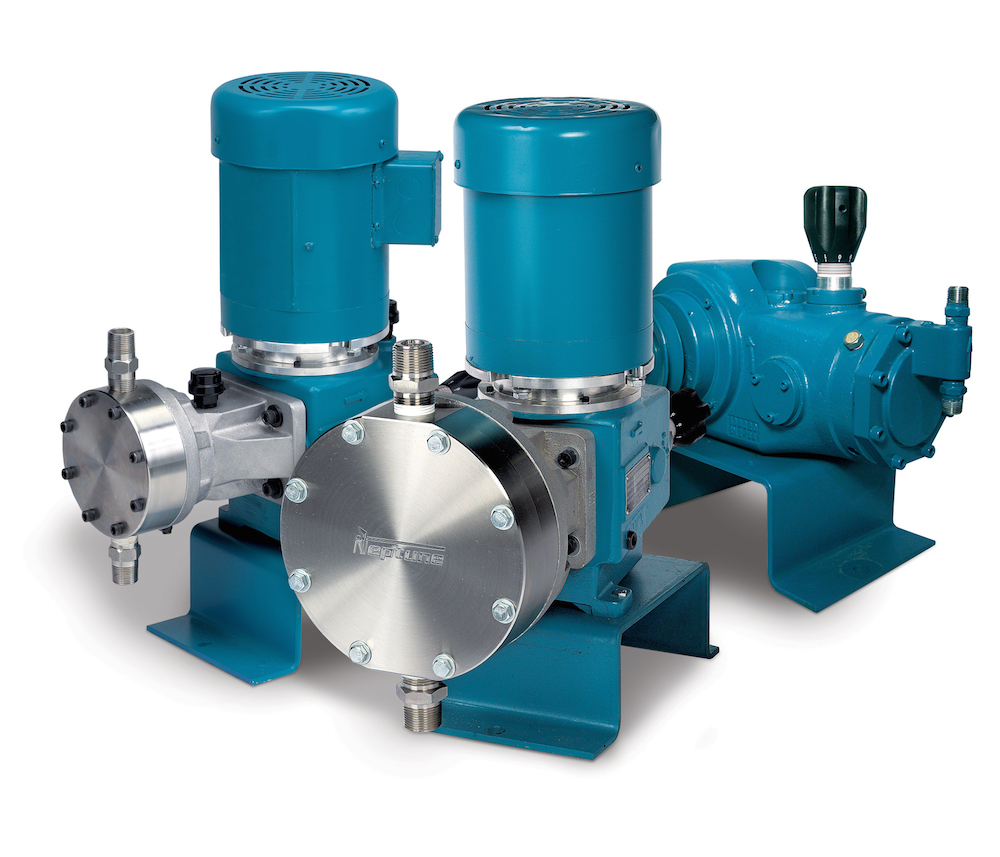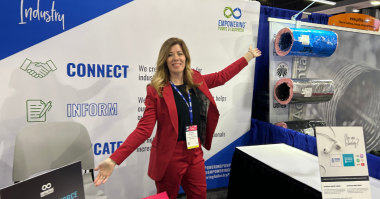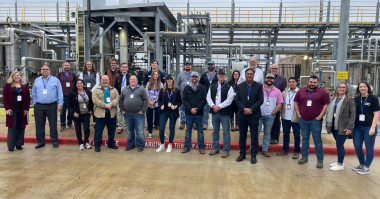A metering pump is purposely designed to move fluids at highly precise flow rates over certain periods of time. This ability to deliver media with detailed accuracy is called “metering.” Because of this unique ability, many different types of pumps can be considered metering pumps, whether they be positive displacement pumps or centrifugal. However, most metering pumps are classified as diaphragm pumps (pumps controlled by solenoid, mechanical actuation, or hydraulic actuation). Metering pumps commonly have the ability for a user to set, adjust, and program the flow rate via a hand dial, touch pad, or other form of control.
Metering Pump Specifications
Metering pumps are divided into two types determined by what mechanism is used to regulate flow rate. The first is fixed displacement metering pumps which adjust the flow rate depending on the speed of the motor, usually to ensure a consistent amount of fluid is moved for each rotation. The second is variable displacement metering pumps which adjust the flow rate to move a consistent amount of fluid no matter what the speed of the engine. This is usually accomplished by adjusting the stroke length or amount of bypassed fluid.
By the numbers, metering pumps have flow rate ranges between .001 gallons per hour (gph) and 20 gallons per minute (gpm), or .038 – 76 liters per minute. The total head pressure of metering pumps ranges between 10 and 30,000 psi (.7 – 2,068 bar), and horsepower can be as low as 0.125 or as high as 5.
Pro’s and Con’s of Metering Pumps
Given their ability to produce precise flow rates, metering pumps are most commonly used to move low amounts of fluid. In fact, most metering pumps are measured by their ability to move gallons per minute, rather than the industry standard gallons per hour. This precision allows metering pumps to be used in a wide variety of complex operations.
Metering pumps can move most thin to thick liquids, and they can even move corrosive liquids depending on their build. The ability to control flow rate also makes them advantageous when moving fluid that is expensive or hazardous.
However, these pumps are not ideal for operations that require the movement of a great deal of fluid in a short amount of time. They are also not recommended when moving most types of gas.
Metering Pump Applications
The most common applications that utilize metering pumps are in the chemical, water, food processing, and other industries where precise flow rate is essential. This includes tasks such as the chemical treatment of water in boilers for use in cooling towers, or when working potable water. Other applications include operations such as wastewater treatment, for the blending of liquids in food processing plants, to reduce frictional losses when moving oil or liquid natural gas in pipelines, and many others.
Advances in Metering Pumps
Qdos Peristaltic Metering Pumps – This new line of pumps from the Watson-Marlow Fluid Technology Group is ideal for disinfection, to adjust the pH and flocculation of drinking water, for wastewater, and industrial process water. The Qdos is specifically designed to decrease chemical metering costs, especially when compared to conventional diaphragm metering pumps. The pumps were showcased at the 2015 American Water Works Association (AWWA) Annual Conference & Exposition.
Blue-White ProSeries-M® M-3 Peristaltic Metering Pumps – These quality pumps had such a great reputation, they were used to remove arsenic in the drinking water of a town in northeastern California. The pumps were utilized in a process that uses sodium hypochlorite and ferric chloride as part of a multi-step arsenic removal process.
Neptune Hydraulic Diaphragm metering pumps are typically used for chemical metering in process and agricultural industries. Chemical metering pumps are available for high and low pressure applications with manual and electronic stroke control. Visit the website to view the full line of metering pump products.
For More on Metering Pumps
Metering Pumps: The Lowdown on Turndown – Jim Carling of the Milton Roy Company shares insights on how to maximize the performance of any metering pump by learning all you need to know on turndown, aka the ratio over which a user can adjust a metering pump’s output.
Choosing the Correct Chemical Metering Pump for Your Application – Walchem’s Mike Price gives tips on how to select the correct metering pump for your chemical process. He includes which pumps are best for which variables and discusses costs versus features.
Waste and Wastewater Treatment – The Tuthill Pump Group specializes in positive displacement pumps and systems. In this white paper, they discuss the use of metering pumps in the treatment of drinking water and wastewater.
Empowering Pumps – Click here to get information on the latest information on metering pump technology, applications, and much more.





Good morning, I need a dosing pump for the application in filling of drinking water in bottle, it will be added calcium and magnesium diluted in a food grade line, the injection of the product must be done in a sanitary way (clamp).
Note: I am from Costa Rica and I need the product put here, and if you can handle the information in Spanish is better.
Thanks for all the great information. We have a chemical dosing pump at my work but I never really knew what it was for. It is not a part of my job. I am a curious man by nature and thought I would look it up. Now I am the smart guy and can tell everyone else about it.
Great post , really useful ; keep rocking
We usually mount metering pumps in our high pressure washers.
The better way to save chemical products.